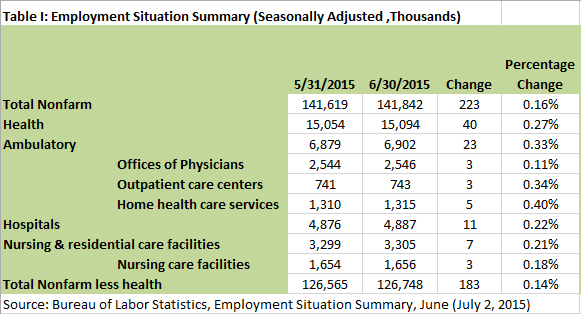Hospital Job Growth Up Vs. Other Health Jobs
The July Employment Situation Summary from the Bureau of Labor Statistics showed health services jobs growing at about the same pace as other jobs: 0.18 percent growth versus 0.15 percent growth. This is a break from most previous months, when health services job growth outpaced other nonfarm civilian jobs significantly. 28,000 of the 215,000 jobs added in July were in health services.
However, there was a significant uptick in the rate of jobs growth in hospitals: Adding 16,000 jobs, hospital employment counted for significantly more than half of health services jobs growth (see Table I).
Jobs growth in nursing care facilities continued to stagnate, where employment in has been flat for twelve months (See Table II).




